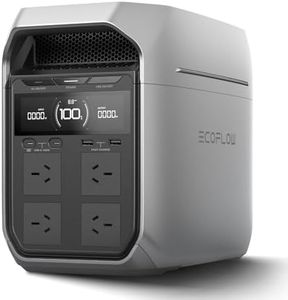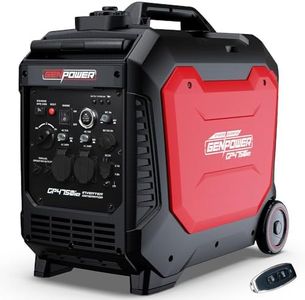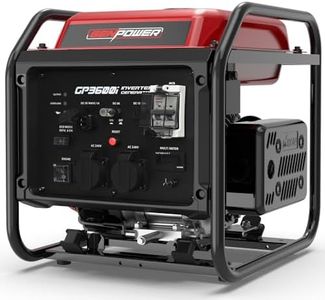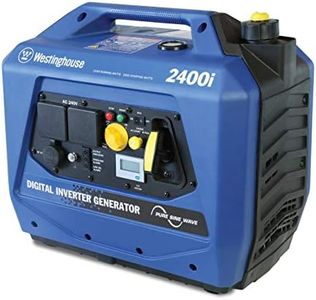We Use CookiesWe use cookies to enhance the security, performance,
functionality and for analytical and promotional activities. By continuing to browse this site you
are agreeing to our privacy policy
10 Best Quiet Rv Generators
From leading brands and best sellers available on the web.Buying Guide for the Best Quiet Rv Generators
Choosing a quiet RV generator is all about balancing power needs, convenience, and noise levels to enhance your camping or travel experience without disturbing nature or your neighbors. Start by outlining what devices and appliances you'll be running, estimate the total power you'll need, and think about when and where you plan to use the generator most. Quiet generators improve comfort and make it easier to relax or sleep in close quarters, so focusing on models designed for low noise operation is key.Noise Level (Decibels)Noise level, typically measured in decibels (dB), tells you how loud the generator is during use, which directly impacts your comfort and your neighbors'. Generators can range from below 50 dB (very quiet, similar to a conversation) up to over 70 dB (much louder, like a vacuum cleaner). For RV use, under 60 dB is preferred for overnight or campsite operation. Think about how much noise you and fellow campers can tolerate and where you’ll be setting up—choosing a lower dB rating ensures a peaceful environment.
Power Output (Wattage)Power output shows how much electricity the generator can provide, both as a maximum (starting watts) and as running (continuous) watts. Common ranges for RVs are from around 2,000 to 4,000 running watts. Small RVs or simple setups may only need 2,000 watts, but running air conditioners or multiple appliances together may require 3,000 watts or more. To choose right, add up the wattage of devices you'll use at the same time—this total guides you to a safe and sufficient power range.
Fuel TypeFuel type determines what you'll use to run the generator, like gasoline, propane, or dual-fuel (both options). Gasoline models are widely available but require storage and careful handling. Propane burns cleaner and can be more convenient if you already use it for other RV appliances. Dual-fuel generators offer flexibility. Think about what’s more accessible and convenient for your travel style when deciding on fuel type.
Run Time (at 25% Load)Run time measures how long the generator can operate on a full tank of fuel at a standard load, often listed as 25% of its capacity. Some generators run 6-8 hours or more per tank, helping you plan for overnight or extended use. If you prefer less frequent refueling or expect to run the generator for long periods, look for longer run times. Think about your typical usage patterns to gauge how important extended run time is for your needs.
Portability (Weight and Size)Portability covers both the weight and physical dimensions of the generator, affecting how easy it is to move, store, or set up. Lighter, compact generators are typically 40-60 pounds and can be moved by one person. Larger units can be much heavier and may require wheels or assistance. If you plan to move the generator frequently or have limited space, prioritize lighter, more compact designs.
Inverter TechnologyInverter technology refers to how the generator produces clean, stable power to safely run sensitive electronics like laptops or smartphones. Inverter generators are generally quieter, more fuel-efficient, and safer for electronics. If you expect to charge devices or use sensitive equipment, an inverter-type model is a strong fit.
Parallel CapabilityParallel capability lets you connect two compatible generators to increase available power while maintaining quieter, smaller units. This feature is useful if you want flexibility—using a single generator for light loads or joining two when you need extra power. If your needs might change, or you have limited storage, parallel capability provides adaptability.













